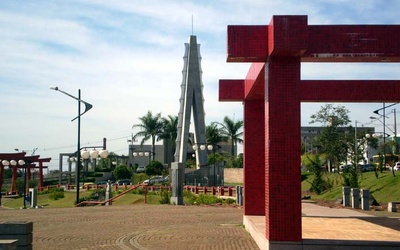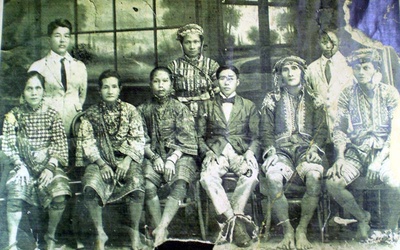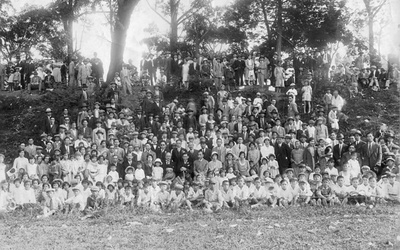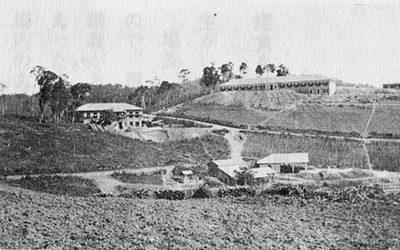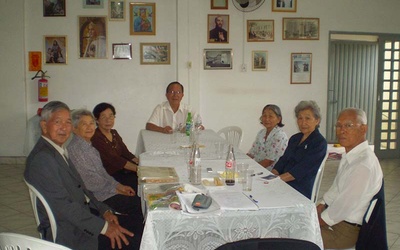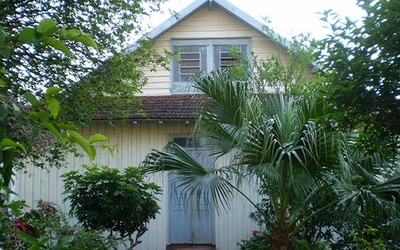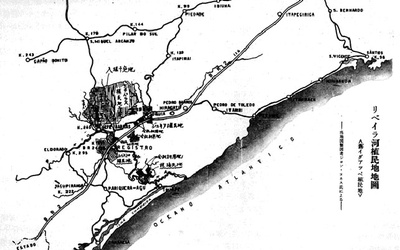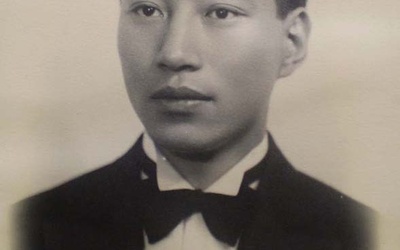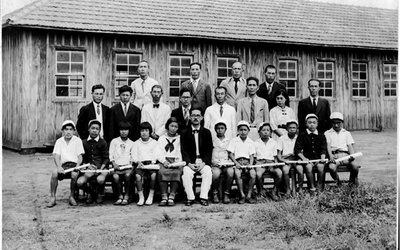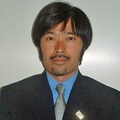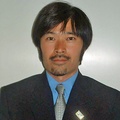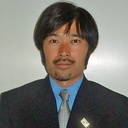
Sachio Negawa
Sachio Negawa is an assistant professor in the departments of Translations and Foreign Languages at the University of Brasília. An expert on Immigration History and Cultural Comparative Studies, he has lived in Brazil since 1996. He has fully dedicated himself to the study of learning institutions in Japanese and other Asian communities.
Last Updated March 2007
Stories from This Author
第15回 おわりに
Aug. 30, 2011 • Sachio Negawa
約一年半の在外研究期間を日本で過ごし、久しぶりにブラジルに戻ってきた。1996年、筆者がブラジル渡航後に身を寄せた古巣であるサンパウロ人文科学研究所(通称「人文研」)で、この稿を起こしている。「ブラジル最古の日系教育機関」と言われるのはサンパウロ市の大正小学校だが、その校舎の跡地に現在のブラジル日本文化協会ビルが建ち、わが人文研は、そのビルの三階にある。 今回は一ヶ月あまりの調査で、サンパウロ市から、州内陸部のトゥッパン、アラサツーバ、アリアンサ、プレジデンテ・プルデンテ…
番外編1-フィリピン・ダバオ
April 14, 2011 • Sachio Negawa
「ミンダナオの山の中でね、いきなりその人にばったり出会って、「私はアイノコです」なんて日本語で言うんだもん。びっくりしちゃったよ」 フィリピン・ダバオ在住の日本人実業家のYA氏は、Aさんという一人のフィリピン日系人との突然の出会いをそう語る。当時はジャーナリストで、ミンダナオ島山岳部に出没する新人民軍(NPA)などゲリラの活動を追っていた。YA氏は、その時はじめてフィリピン日系人なるものの存在を知ったという。 ダバオは、ミンダナオ島にあるフィリピン共和国第三の都市。フィリ…
第14回 洋上小学校
Dec. 14, 2010 • Sachio Negawa
戦前期から戦後期にかけて、海に囲まれた日本から外国への移民は、ほとんどすべてが海上輸送に拠っていた。移民船は海外渡航の主役であり、移民の誰もが船内生活を経験したものだった。 「洋上小学校」(船内小学校)は、移民船内で開校された小学校である。ブラジル移民は、家族移住が主であったので、主婦である女性や子どもたちが多く含まれ、航海中の賑わいや華やぎをあたえていた。洋上小学校は、小学校学齢期の子どもたちを対象とするものであり、航海日数のとりわけ長かったブラジル移民にもっとも多くの…
第13回 御真影・教育勅語・修身
Sept. 10, 2010 • Sachio Negawa
戦前ブラジルの日系移民子弟教育の理念は、臣民教育、忠君愛国的教育であったとよく言われる1。では、臣民教育、忠君愛国的教育とはいかなるものであろうか。それは、御真影をいただき、教育勅語の精神を体得する「臣民」、すなわち天皇に対する忠誠心と愛国心を持つ「真の日本人」になることであったといえよう。 サンパウロの日本移民史料館に復元されている移民の掘建て家屋内には、天皇皇后両陛下の御真影が飾られ、異国に来ていかに苦労しようとも皇室への尊崇を忘れない日本人の健気さや忠君愛国の精神が表…
第12回 日系実業学校
June 21, 2010 • Sachio Negawa
ブラジルには実にさまざまな日系教育機関が存在したが、1930年代に農業学校や商業学校などいくつかの実業学校が設立されたことが確認できる。以前紹介したものの中では、日伯実科女学校やサンパウロ裁縫女学院など(本連載第5~6回参照)のほかに、レジストロ補修学校(本連載第9回参照)がそれに当たる。同校は別名「農業補修学校」と呼ばれ、日本語、ブラジル地理などの一般教養とともに農業技術など実業科目があった。サンパウロ州内陸部では、1938年には、ソロカバナ鉄道沿線のプルジデンテ・プルデ…
第11回 北パラナ地方(2)
March 17, 2010 • Sachio Negawa
サンパウロ州境のカンバラからはじまった日系移民の北パラナへの入植は、同地方の開発とともに1930年代に広がりを見せ、日系教育もそれにしたがって拡大していった。ブラジル日系教育の統括機関であるサンパウロ日本人学校父兄会が1936年にブラジル日本人教育普及会改組され、会長に元外交官の古谷重綱が就任した。この普及会は、ブラジル国内に第1から第6支部を創設したが、第3支部に北パラナのカンバラ区、ロンドリーナ区、トレス・バラス区が入っている(ブラジル日本人教育普及會, 1937, p…
第10回 北パラナ地方(1)
Dec. 9, 2009 • Sachio Negawa
周知のように、ブラジルは世界最大の日系コミュニティを有し、その人口は約150万人とされる。日系人口はいくつかの地域に集中しているが、もっとも人口が多いのはサンパウロ州で、それに次ぐのが南隣のパラナ州である1 。同州内でも「北パラナ」と呼ばれる北西部に、日系人口が集中している。現在、ブラジルの「日本文化」プレゼンスで、もっとも熱いと言われるのが、この北パラナであり、ロンドリーナ(Londrina 人口約50万)、マリンガ(Maringá 人口約35万)という中核…
第9回 レジストロの場合
Nov. 5, 2009 • Sachio Negawa
サンパウロ州レジストロは、サンパウロ市から南西に約200キロ。パラナ州の州都クリチバに向かう国道116号線の半ばに位置する。大西洋に注ぐリベイラ川が大きく湾曲する地点で、川岸から西に向かって市街地が広がっている。 ここは、ブラジルでもっとも古い日系植民地の一つが開かれた地域である。1910年代初め東京シンジケート代表青柳郁太郎(1867-1943)らがこの地域の州有地を無償提供され、総称して「イグアペ植民地」と呼ばれるレジストロ、桂、セッテ・バーラス、キロンボなどの植民地を…
第8回 子どもと教員の生活世界(2)
Oct. 1, 2009 • Sachio Negawa
サンパウロ市在住のYT氏(1933年生まれ)は、日系二世の建築家で、筆者の大切な友人の一人だ。外国語教育が禁止された時期に幼少期を送った人だが、日伯両語のバイリンガルで、氏とお話する時はいつも日本語である。そんな氏とある日、戦中期の教育の話をしていて、ふと「Yさんは教育勅語なんて習ったんですか?」と聞いてみたところ、「全部言ってみましょうか」と言って、「チンオモウフニ、ワガコウソコウソウ、クニヲハジムルコトコウエンニ、トクヲタツルコト、シンコウナリ…」とやりは…
第7回 子どもと教員の生活世界(1)
Sept. 3, 2009 • Sachio Negawa
バイリンガル教育の効能が喧伝される昨今、思い至るのは1930年代のブラジル日系児童・生徒たちの言語生活である。当時の多くの日系の子どもたちは、午前中はポルトガル語でブラジル正課の授業を受け、午後からは日本人学校に通う(あるいはその逆)というバイリンガル生活を送っていた。同じ校舎で、半日はポルトガル語、あとの半日は日本語という学校も少なくなかった(写真7-1)。 RY氏はサンパウロ州アリアンサ出身の日系二世。見事な日伯語のバイリンガルで、1930年代の子どもの頃に歌ったとい…

